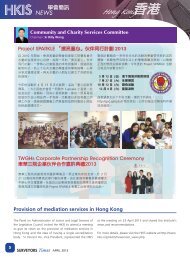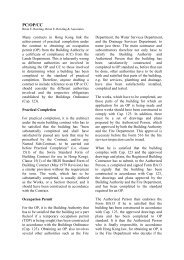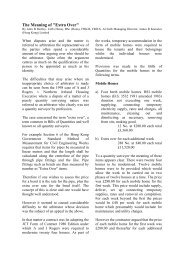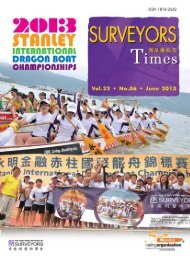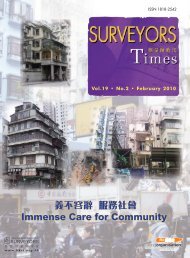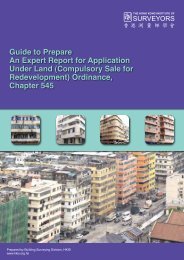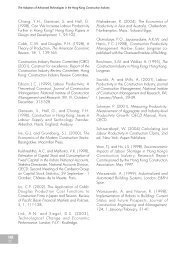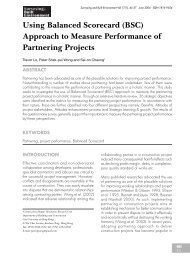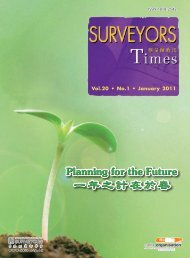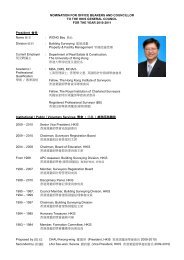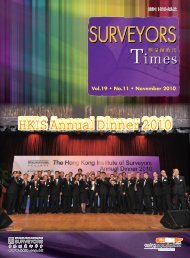Special issue to commemorate the 70th Anniversary of the Battle of ...
Special issue to commemorate the 70th Anniversary of the Battle of ...
Special issue to commemorate the 70th Anniversary of the Battle of ...
You also want an ePaper? Increase the reach of your titles
YUMPU automatically turns print PDFs into web optimized ePapers that Google loves.
Chinese Eyes on British Tanks: His<strong>to</strong>rical Verification <strong>of</strong> a War Heritage<br />
enabled <strong>the</strong> author <strong>to</strong> reconstruct, for <strong>the</strong> first time, a<br />
complete s<strong>to</strong>ry <strong>of</strong> how <strong>the</strong> tradition was created.<br />
The Chinese individual in question was Eu Tong<br />
Sen ( 余 東 璇 ) (1877-1941) 5 , a Singapore-based<br />
businessman who inherited a modest family herbal<br />
medicine shop and developed it in<strong>to</strong> a thriving regional<br />
business providing traditional medicine <strong>to</strong> Chinese<br />
communities in <strong>the</strong> British colonies <strong>of</strong> Hong Kong,<br />
Malaya and Singapore. Today, <strong>the</strong> business has grown<br />
in<strong>to</strong> an international holding company with Eu Tong<br />
Sen’s grandson, Richard Eu, serving as <strong>the</strong> Group<br />
Chief Executive Officer. In Hong Kong, <strong>the</strong> company<br />
is as much an institution as a heritage, and its name<br />
is recognized by almost every local Chinese – “Eu<br />
Yan Sang” ( 余 仁 生 ) medicine shop. Its his<strong>to</strong>ric main<br />
shop on Queen’s Road Central is a local landmark<br />
particularly memorable for its whimsical window<br />
display <strong>of</strong> a life size model <strong>of</strong> a horse, on which<br />
sits a suit <strong>of</strong> replica medieval armour, a perhaps<br />
unintentional but fitting tribute <strong>to</strong> <strong>the</strong> crea<strong>to</strong>r <strong>of</strong> a<br />
tradition for <strong>the</strong> armoured units <strong>of</strong> <strong>the</strong> British Army.<br />
A RUMOUR OF WAR: FACTS<br />
AND MYTHS OF THE “CHINESE<br />
EYES”<br />
The commonly known s<strong>to</strong>ry <strong>of</strong> how <strong>the</strong> “Chinese<br />
Eyes” tradition was created is as follows. In early<br />
March <strong>of</strong> 1917, Mr. Eu Tong Sen, a respected Chinese<br />
philanthropic businessman based in <strong>the</strong> British colonial<br />
city <strong>of</strong> Singapore, and a Permanent Un<strong>of</strong>ficial Member<br />
<strong>of</strong> <strong>the</strong> Federal Council <strong>of</strong> <strong>the</strong> Malay States, prevailed<br />
upon <strong>the</strong> council <strong>to</strong> contribute funds <strong>to</strong>wards Britain’s<br />
war effort. Part <strong>of</strong> <strong>the</strong> funds, worth £6,000, would be<br />
used for buying a tank <strong>of</strong> <strong>the</strong> latest Mark IV model for<br />
<strong>the</strong> British Army. To honour this special war donation,<br />
a pair <strong>of</strong> eyes was painted on <strong>the</strong> bow <strong>of</strong> <strong>the</strong> tank, in<br />
accordance with <strong>the</strong> Chinese maritime tradition <strong>of</strong><br />
painting eyes on <strong>the</strong> bow <strong>of</strong> boats as a talisman for safe<br />
seafaring 6 . The gesture was intended <strong>to</strong> be a one-<strong>of</strong>f,<br />
but <strong>the</strong> idea caught on, and it was adopted after <strong>the</strong> war<br />
by successive tank regiments as its unit symbol, and<br />
became famously known as <strong>the</strong> “Chinese Eyes.”<br />
The source <strong>of</strong> this familiar narrative is most likely<br />
from one <strong>of</strong> <strong>the</strong> earliest post-World War I publications<br />
on <strong>the</strong> development <strong>of</strong> <strong>the</strong> tank – <strong>the</strong> memoir <strong>of</strong><br />
Lieutenant-Colonel Albert Gerald Stern, Tanks 1914-<br />
1918: The Log-book <strong>of</strong> a Pioneer (1919). This is a<br />
publication authored by arguably <strong>the</strong> most authoritative<br />
military figure involved in <strong>the</strong> creation <strong>of</strong> British tanks<br />
– Lieutenant-Colonel Stern, a former banker turned<br />
military <strong>of</strong>ficer, who <strong>to</strong>ok a leadership role in <strong>the</strong><br />
development and production <strong>of</strong> British tanks in World<br />
War I. In Stern’s memoir, <strong>the</strong>re is also a brief mention<br />
on why <strong>the</strong> “Chinese Eyes” were created:<br />
All Chinese ships and boats, large or small, have<br />
a large “eye” painted at each side <strong>of</strong> <strong>the</strong> bow. The<br />
Chinese explanation <strong>of</strong> <strong>the</strong> cus<strong>to</strong>m is, “No have<br />
eyes, how can see?” It seemed only right that this<br />
“Landship,” [referring <strong>to</strong> <strong>the</strong> tank purchased and<br />
donated by Eu Tong Sen] also, should see, and<br />
accordingly an eye was painted on each side <strong>of</strong> its<br />
bow. (Stern 1919: pp128-129)<br />
This sketchy s<strong>to</strong>ry <strong>of</strong> <strong>the</strong> origin <strong>of</strong> <strong>the</strong> “Chinese Eyes”<br />
has become <strong>the</strong> basis <strong>of</strong> so many re-interpretations that<br />
<strong>the</strong> factual basis has been lost through erroneous and<br />
embellished retelling. However, thanks <strong>to</strong> previously<br />
unknown information provided by Eu Tong Sen’s<br />
grandson, Mr. Richard Eu – as well as newly emerged<br />
his<strong>to</strong>rical materials on individual British tanks used<br />
in World War I 7 , a detailed and his<strong>to</strong>rically accurate<br />
account <strong>of</strong> <strong>the</strong> origins <strong>of</strong> <strong>the</strong> “Chinese Eyes” can now<br />
be <strong>to</strong>ld.<br />
THE REDISCOVERY:<br />
HISTORICAL ORIGINS OF THE<br />
“CHINESE EYES”<br />
After Eu’s <strong>of</strong>fer <strong>of</strong> a battle tank was duly accepted<br />
by <strong>the</strong> Army Council, <strong>the</strong> War Office decided <strong>to</strong><br />
exploit <strong>the</strong> propaganda value <strong>of</strong> this patriotic act by<br />
decorating <strong>the</strong> tank in a special way, and consulted<br />
Sir Frank Swettenham (1846-1950) for suggestions.<br />
Swettenham had been <strong>the</strong> Resident-Governor <strong>of</strong> <strong>the</strong><br />
Straits Settlements (<strong>the</strong> collective name for <strong>the</strong> British<br />
colonial cities <strong>of</strong> Malacca, Penang and Singapore in<br />
<strong>the</strong> Malay Peninsula) from 1896-1901 and he was<br />
now <strong>the</strong> Joint Direc<strong>to</strong>r <strong>of</strong> <strong>the</strong> Official Press Bureau<br />
at Whitehall, a post he held from 1915 <strong>to</strong> 1919. The<br />
Official Press Bureau was responsible for controlling<br />
news and managing <strong>the</strong> media during <strong>the</strong> war, or, in<br />
o<strong>the</strong>r words, it was a propaganda unit. Being an “old<br />
Malay hand,” Swettenham certainly was aware <strong>of</strong> <strong>the</strong><br />
tradition <strong>of</strong> painting eyes on <strong>the</strong> bows <strong>of</strong> boats by local<br />
ethnic Chinese seafarers <strong>of</strong> Fujianese descent. With<br />
this in mind, he suggested <strong>to</strong> <strong>the</strong> War Office that <strong>the</strong><br />
two motifs he thought would be most identified with<br />
<strong>the</strong> Chinese culture were: <strong>the</strong> clichéd dragon and, more<br />
creatively, eyes that were <strong>of</strong>ten painted on <strong>the</strong> bow <strong>of</strong><br />
Chinese boats in <strong>the</strong> Straits Settlement (Figure 2). It<br />
appears that <strong>the</strong> War Office originally approved only<br />
<strong>the</strong> dragon but not <strong>the</strong> eye motif, and <strong>the</strong> evidence for<br />
5<br />
Edi<strong>to</strong>rs’ note: Eucliffe castle, where <strong>the</strong> massacre <strong>of</strong> at least 54 surrendered defenders by <strong>the</strong>ir cap<strong>to</strong>rs occurred during <strong>the</strong> <strong>Battle</strong> <strong>of</strong> Hong Kong,<br />
was a property owned by <strong>the</strong> Eu Tong Sen.<br />
6<br />
Edi<strong>to</strong>rs’ note: It is important <strong>to</strong> note that this is by no means exclusively a Chinese tradition and is very probably not originally one, having<br />
probably come <strong>to</strong> China with Arab seafarers in <strong>the</strong> 7th century CE. The origin is <strong>the</strong> ‘eye <strong>of</strong> Horus’ <strong>of</strong> <strong>the</strong> Egyptians - <strong>the</strong> original <strong>of</strong> all <strong>the</strong> ‘evil<br />
eyes’ (i.e. eyes that avert evil) <strong>of</strong> <strong>the</strong> Mediterranean (q.v. <strong>the</strong> Maltese luzzu) and <strong>of</strong> <strong>the</strong> Catholic, non-pagan replacement by a star, <strong>the</strong> Stella Maris<br />
(a sobriquet <strong>of</strong> <strong>the</strong> Blessed Virgin Mary). They are referred <strong>to</strong> by maritime his<strong>to</strong>rians and ethnographers as ‘oculi’ (plural) and ‘an oculus’ (singular),<br />
from <strong>the</strong> Latin for ‘eye’. Reference <strong>to</strong> <strong>the</strong> discussion <strong>of</strong> this and <strong>the</strong> Chinese usage can be found in Needham’s Science & Civilization in China.<br />
7<br />
These materials include excerpts <strong>of</strong> <strong>of</strong>ficial letters documented in <strong>the</strong> manuscript <strong>of</strong> an unpublished biography <strong>of</strong> Eu Tong Sen, provided Mr.<br />
Richard Y. M. (see: Eu 2008), and Cambrai battle records on <strong>the</strong> Landships website at http://sites.google.com/site/landships/.<br />
SBE<br />
14



